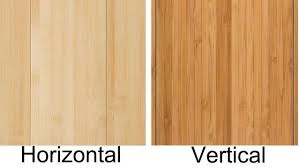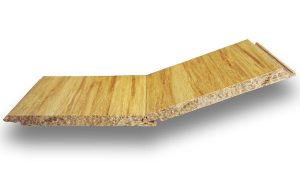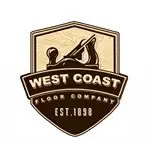 The demand for bamboo flooring has steadily increased in recent years and rightly so. Bambo is thought of as a hardwood flooring material because of its hardness, durability, and similarity to many hardwoods. However, bamboo is actually a grass. The Janka hardness rating of bamboo flooring is much higher than some of the hardier hardwoods on the market. Additionally, the beauty of bamboo is that it is considered a renewable resource due to its fast-growing tendencies – it can grow up to 4 feet in a single day! If you’re considering bamboo as your next flooring material, read on to learn more about bamboo flooring options.
The demand for bamboo flooring has steadily increased in recent years and rightly so. Bambo is thought of as a hardwood flooring material because of its hardness, durability, and similarity to many hardwoods. However, bamboo is actually a grass. The Janka hardness rating of bamboo flooring is much higher than some of the hardier hardwoods on the market. Additionally, the beauty of bamboo is that it is considered a renewable resource due to its fast-growing tendencies – it can grow up to 4 feet in a single day! If you’re considering bamboo as your next flooring material, read on to learn more about bamboo flooring options.
Carbonized Bamboo
What is carbonized Bamboo? Natural bamboo is placed into a Carbonized oven whereby the oven pressure, steam, and heat are used to alter the color of the natural bamboo stems, changing them into the caramel brown color. Thus, carbonized bamboo has a much deeper and richer color than it’s non-carbonized counterpart. Non-carbonized bamboo has a lighter color that is similar to beech wood. If you’re looking for a tone more like traditional hardwood flooring, carbonized bamboo is a good choice. With that being said, however, the carbonization process does reduce the hardness factor somewhat. So if you’re looking for an extremely durable bamboo floor, you should be looking at natural forms or the more modern strand woven versions that rank near the top of the hardness scale.
Vertical Versus Horizontal Bamboo Option

Yes, this is a little bit confusing but the main difference between vertical and horizontal bamboo is the way that the floorboard is constructed not the flooring laid down. Vertical bamboo is composed of several thin strips of bamboo that are placed side by side on their thin edge and laminated together. This results in a plank that has a lined, textured, yet uniform appearance without an obvious wood grain pattern. Conversely, horizontal bamboo is made by laying the wide edge of thin strips of bamboo on top of each other before lamination. The resulting planks exhibit a more defined grain when compared to vertical bamboo. As you can see from the picture, the look of your flooring will be different.
Strand Woven Bamboo
 Strand woven bamboo flooring is made by compressing bamboo fibers under heat and pressure. This gives strand woven bamboo flooring its great strength and durability. After the bamboo has been harvested, it is cut, stripped down, and shredded into bamboo fiber strands, before being woven together. If the final product is to be natural strand woven bamboo then the fibers are left in the natural state. If the final product is to be carbonized strand woven bamboo flooring, then the fibers are smoked to provide a warm, coffee-colored bamboo.
Strand woven bamboo flooring is made by compressing bamboo fibers under heat and pressure. This gives strand woven bamboo flooring its great strength and durability. After the bamboo has been harvested, it is cut, stripped down, and shredded into bamboo fiber strands, before being woven together. If the final product is to be natural strand woven bamboo then the fibers are left in the natural state. If the final product is to be carbonized strand woven bamboo flooring, then the fibers are smoked to provide a warm, coffee-colored bamboo.
Engineered Bamboo Option
If you are looking for a cheaper alternative to the hardest strand woven bamboo, engineered bamboo is also available. DIYers love engineered bamboo flooring as the click and lock floating floor system doesn’t require any nailing, gluing, or specialized experience. Just like its engineered hardwood cousins, engineered bamboo has a thin veneer of bamboo that’s applied to a plywood or fiberboard core that makes it structurally stable. Engineered bamboo planks can also be constructed to be wider than solid planks which are very trendy now and considered desirable in certain design layouts.
There are endless options for bamboo flooring and we can help you find the perfect floor for you. Just contact us by calling (707) 864-2199 or visit our website for more information.
